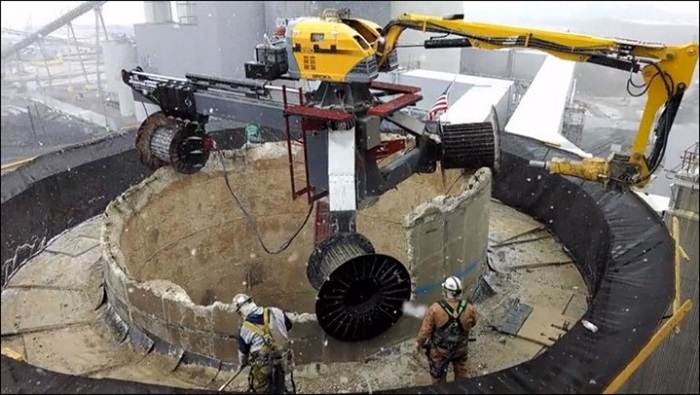
Workers use the MANTIS to demolish the High Flux Beam Reactor's exhaust stack, a prominent part of the Brookhaven National Laboratory. Source: DOE EM
Work crews have demolished the High Flux Beam Reactor (HFBR) exhaust stack at Brookhaven National Laboratory, on Long Island, N.Y., the Department of Energy’s Office of Environmental Management (EM) reported last week.
The 320-foot-tall red-and-white stack was decommissioned and demolished under the direction of the DOE, with oversight by the U.S. Army Corps of Engineers.
Demolition work: Removal of the stack started in early January using a concrete chimney demolition system called the MANTIS. Work crews dismantled the stack down to its base, about 36 feet above ground, before fully demolishing it in late February.
The next steps for the project are the cleanup of soils, the removal of the below-ground stack infrastructure, and verification that cleanup goals have been met. The Oak Ridge Institute for Science and Education will conduct independent verification of the stack cleanup, according to the DOE.
The first rail shipment of the stack’s debris to off-site disposal will involve 65 intermodal waste containers loaded onto a 10-railcar train. About 45 additional containers are expected to be shipped as part of the second and final waste shipment.




